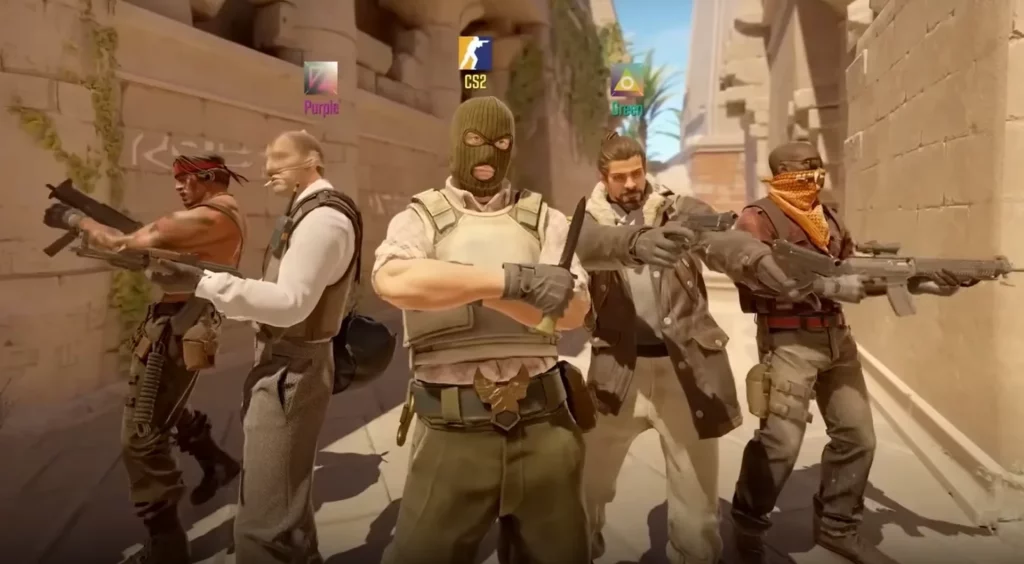T Side
Mastering the T Side in Counter-Strike 2
If Counter-Terrorist (CT) gameplay is about defense and patience, Terrorist (T) gameplay in Counter-Strike 2 is all about aggression and execution. As a T, you are tasked with planting the bomb at one of the designated sites or eliminating all CTs. Mastering the T-side involves understanding map control, efficient use of resources, and effective execution of strategies. This guide will provide an in-depth understanding of the T-side dynamics to help you become a formidable player.

Understanding the T Role
On T side, crosshair placement is your bread and butter. You want to preaim all common angles while being ready to instantly shoot. If you go with your team, you send out your entry fragger first and close behind him, you need to do the trades.
The Aggressor’s Advantage
As a Terrorist, your primary objective is to plant the bomb at one of the designated bomb sites and defend it until detonation. Alternatively, eliminating all CTs also results in a round win. The offensive role of the T side provides an initiative that, if utilized effectively, can put significant pressure on the CTs.
Map Control and Timing
T-side gameplay revolves around gaining map control to manipulate CT rotations and create openings for bomb plant. Understanding the layout and timings of each map is critical to execute successful strategies.
Weapon Choices
Weapon selection on the T side can vary depending on your strategy, economy, and role in the team. The AK-47 is the staple weapon for its high damage output and one-shot headshot potential. Other weapons like the Galil or SMGs can be viable during low-economy rounds.
T-Side Strategies: Executing, Faking, and Trading
Executing on a Site
Executing onto a site requires coordination and effective use of utility. Grenades can be used to block off sightlines, force CTs out of positions, and clear the path for the plant. Coordinating the execution to occur simultaneously can overwhelm the CTs and secure the site for the plant.
Faking and Diversion
Faking involves creating the illusion of committing to a bomb site, forcing the CTs to rotate, and then attacking the less-defended site. This strategy relies heavily on convincing utility usage and sells the fake.
The Art of Trading
Trading or refragging ensures that even if a teammate is killed, the opponent is immediately taken out by another team member. It prevents the CTs from gaining an advantage and maintains balance in numbers.
Post-Plant Scenarios
Once the bomb is planted, the roles reverse, and Ts turn into defenders. Positioning and crossfires become important, and every second the bomb ticks, the pressure mounts on the CTs.
Economy Management on T side
Just like the CT side, managing economy is essential for the T side. Understanding when to buy, when to eco (save), and when to force buy is crucial for long-term success. It’s also important to consider the team’s overall economic situation before purchasing.
Communication and Coordination
Clear and concise communication is crucial on the T side. Whether it’s calling out enemy positions, coordinating attacks, or sharing plans for the round, effective communication can significantly enhance your team’s performance.
Adaptation and Flexibility
Adapting to the CTs’ strategies, economy, and playstyle is a key aspect of T-side gameplay. If a strategy isn’t working, being flexible and trying a different approach can often yield better results.
Conclusion
Mastering the T side in Counter-Strike 2 involves a deep understanding of offensive strategies, map control, economy management, and team communication. It’s about setting the pace of the round, playing mind games with the CTs, and executing coordinated attacks. With the right approach and plenty of practice, the T side can offer a rewarding and dynamic CS2 experience. Good luck, and happy gaming!